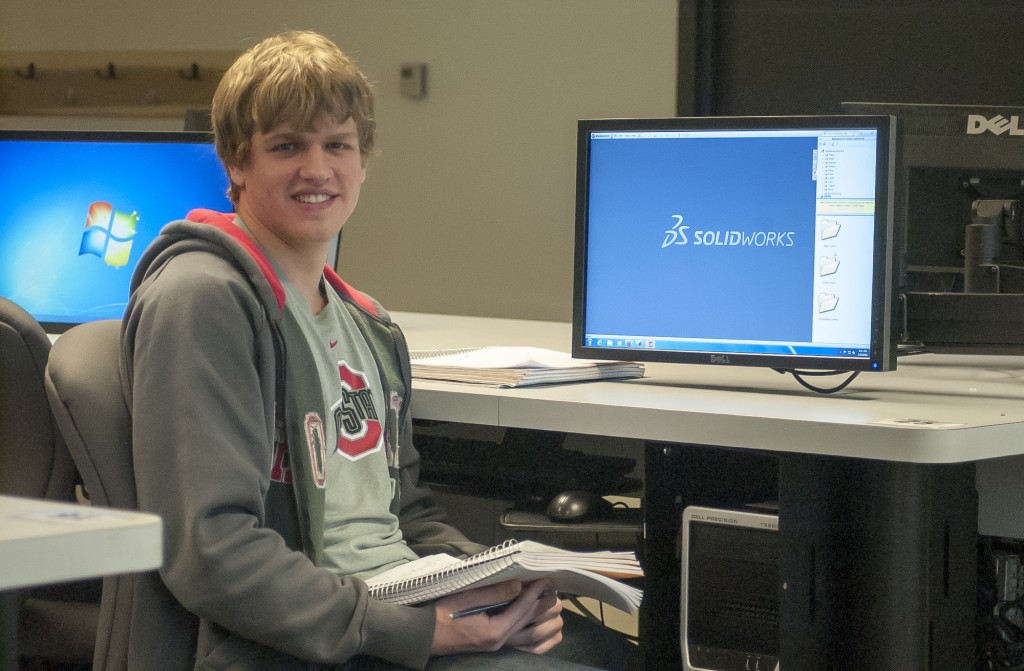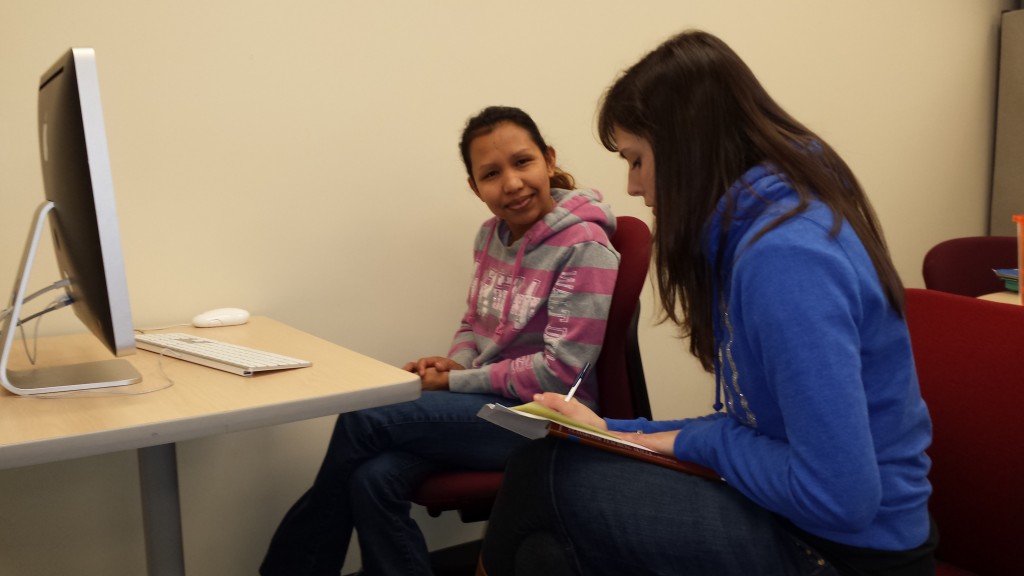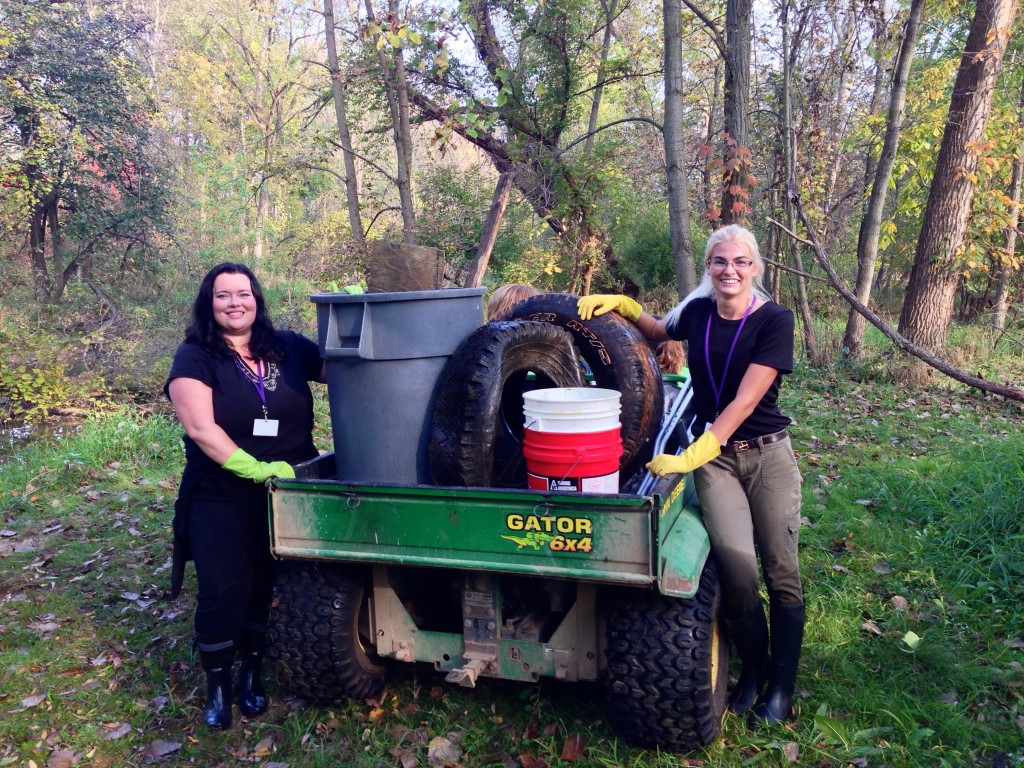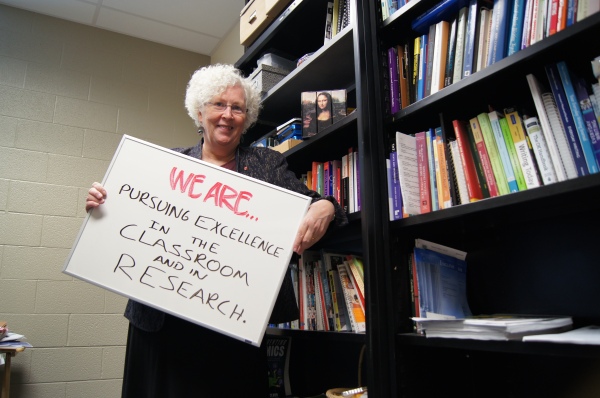
It began with a simple question: “What if a Big Ten university, a school district, and community worked together on healthy youth development?” The answer was a unique initiative called STEMpowerement.
One of the primary missions of The Ohio State University at Mansfield is to impact its local community by providing opportunity through higher education. In 2011-2012, Dr. Stephen Gavazzi, dean and director of the Ohio State Mansfield campus, charged a key group of faculty and staff to begin putting together a plan to provide access to success through science, technology, engineering, and math (STEM) fields.
Program developers based their pilot program on the findings of Bob Moses, a noted civil rights activist, and founder of the Algebra Project. His book Radical Equations describes the power of youth movements, and necessity of access to STEM knowledge. The model he outlines in the book has been employed in dozens of cities in and around the United States and asserts that the STEM fields are gateways to social and economic success. With decades of economic upheaval in its rearview mirror, the city of Mansfield, Ohio seemed prime for such an initiative.
A few months later, STEMpowerment was born. Its mission was to provide a Learning Community for students who want to engage in opportunities for education and community improvement. Students come together in shared courses, lectures, group discussions, service learning, and study abroad opportunities. Students are also able to become mentors, and join off campus initiatives. Ultimately, students actively address real world issues, and build a better future.
Dr. Terri Bucci, an education professor who oversees much of the academic and outreach portion of the program, explains further: “This is a student-empowered learning community. The faculty provides guidance and instruction in the areas of our expertise and within the frame of empowerment of, by, and for youth. Faculty and community leaders work with STEMpowerment students in areas of leadership development, academic insights, understanding, knowledge creation, and advising for academic, research, and community organizing.”
The program’s pilot year has thrived upon a multi-disciplinary group of individuals from many academic disciplines. The program’s academic portion allows students to schedule the program’s classes alongside their major’s requirements. Such flexibility pools students from Ohio State’s 170+ majors, rather than any one major. The program’s classes brings them together in a dynamic learning atmosphere. Such a model enables the program to reach deeper levels of academic collaboration and individual skill building.
A portion of the program’s academic classes allows students to gain personal and professional development from Strengths Finder, a product of the Gallup, Inc. Strengths Finder is an interactive survey that categories abilities and characteristics of individuals into 32 key strengths areas. After completing the survey, students receive a report that identifies their top strengths. The report provides students with an understanding of their potential and further outlines action items that allow students to succeed in academic, work, and social environments.
“The first year of the STEMpowerment Leadership Gateway is focused on issues of empowerment and social justice for a community purpose,” says Director of Admissions and First Year Experience Shari Petersen, “Our goal is to help students identify their individual strengths, and then provide opportunities where these strengths can be put into action collectively with their classmates’ to make a difference in the local community and on campus.”
With that in mind, STEMpowerment hit the road. During a series of visits to area organizations, students were to take in the mission and work of each organization, and identify how their individual strengths might enhance the work at hand. Following the series of visits, their task was to turn a list of action items to enact and effect change into formal class proposals by the end of the Autumn Semester. The proposals were ultimately presented a University panel who identified the most sustainable and executable proposals.
Upon review, the panel and students identified raising awareness among area youth about how they might become involved themselves as a key next step in the process. That became the program’s work for the beginning of 2013. In conjunction with raising community awareness, the students will be reaching out to students in local high schools to develop sister STEMpowerment groups to empower and amplify those youth voices.
In the coming months, the STEMpowerment program will continue to lay the groundwork of what it hopes will become a larger, even more dynamic agent for sustainable community growth. As students go out and begin to employ their skills, they will be fulfilling a dual role of breaking new ground, and raising awareness for for innovative community driven change. Even as they just begin that journey, it has already taken the program to far away places.
In January, the voice of Ohio State Mansfield reached Ninth Annual Conference on Sustainability in Hiroshima, Japan. The conference is a knowledge community brought together by a common concern for sustainability in a holistic perspective, where environmental, cultural, economic and social concerns intersect. The very nature of the program’s work is at the forefront of sustainable culture and landed them a place for presenting at the conference. STEMpowerment student Dillion Carr, a junior from Ontario, shared an overview of innovative STEMpowerment outreach and revealed early survey results of its effectiveness. For 45 minutes, Dillion found himself presenting the young, promising program to the leading innovators, and educators from around the world.
Even for a research institution of The Ohio State University’s stature, this was a unique opportunity. Dr. Bucci notes, “Most other presenters at this conference were faculty, PhD students and graduate students from around the world. This type of activity, leadership in the academic world and in knowledge creation, is one of goals of the learning community. “
Though it has already graced a world stage, the work of STEMpowerment is just beginning. “Much of this years’ work is on developing identity of our OSU learning community and the youth connection to the Mansfield community through youth/student voices while maintaining a focus on empowerment access, change, and leadership,” notes Bucci. In the closing weeks of the semester, students will continue to go out and build on the bold mission of STEMpowerment.
And that’s exactly what Dillion loves about it: “It all revolves around us. As students and as educators, we just have to figure out what we want to do to better our lives in Mansfield and keep that lifestyle going for generations to come.”




